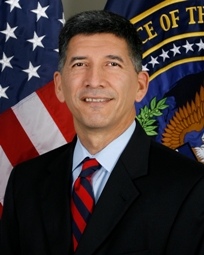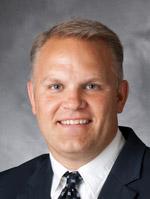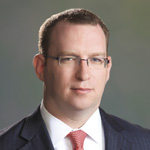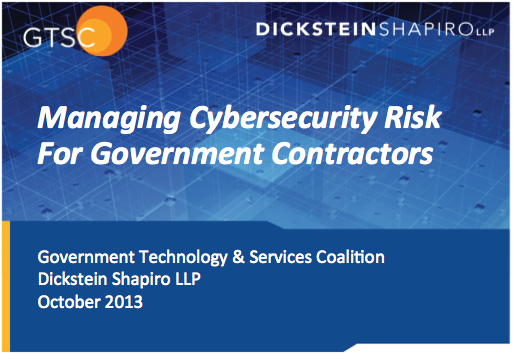Insight: Mark Borkowski, CBP March 19
Join us March 19 to talk with Assistant Commissioner Mark S. Borkowski who leads the Office of Acquisition, for U.S. Customs & Border Protection. Borkowski’s office provides oversight for all CBP acquisitions and consists for three directorates: Acquisition Governance and Oversight, Acquisition Support and the Procurement Directorate. In addition, Borkowski serves as CBP’s component acquisition executive, responsible for ensuring that the agency’s acquisition practices are cost effective, support mission requirements and are integrated across CBP as appropriate.
Previously Borkowski was the assistant commissioner of the Office of Technology Innovation and Acquisition starting in July 2010. As such, Borkowski was responsible for ensuring that CBP’s technology efforts are properly coordinated and focused on meeting CBP’s complex border mission.
Prior to this appointment, Borkowski served as CBP’s executive director of the Secure Border Initiative, where he oversaw the implementation of the Department of Homeland Security’s efforts to develop enhanced situational awareness for frontline CBP personnel along the U.S. borders.
Before leading the Secure Border Initiative, Borkowski served as executive director for mission support at headquarters for CBP’s Border Patrol. In this role, he supported the chief of the Border Patrol in executing a $2 billion annual budget and in managing a total workforce in excess of 17,000 agents and support personnel. He oversaw functions of workforce management, labor and employee relations, finance, logistics, recruitment, training, facilities and tactical infrastructure.
As a DHS Level III certified program manager, Borkowski provided expert advice and support to the Border Patrol on the technology program within the Secure Border Initiative called SBInet. He also directed an expedited organizational development efforts to redesign and transform the Border Patrol to respond to unprecedented growth in the organization driven by Presidential orders and Congressional appropriations. His division staff included 75 personnel assigned to six separate geographic locations.
Prior to his appointment with the Border Patrol, Borkowski served as director for asset management in CBP’s Office of Air and Marine. In that role, he oversaw acquisition and sustainment for CBP’s aircraft and marine assets.
Before joining CBP, Borkowski was program executive for the Robotic Lunar Exploration Program in the Exploration Systems Mission Directorate at NASA. In that role, he oversaw the development and operation of robotic missions to the moon as precursors to eventual human missions. He previously served as assistant deputy associate administrator for development programs in the Exploration Systems Mission Directorate. Borkowski assisted in overseeing the technology, development and acquisition programs to implement the President’s Vision for Space Exploration.
Also while at NASA, Borkowski served as program executive overseeing the Hubble Space Telescope Robotic Servicing and De-orbit Mission and as the coordinator for NASA’s Exploration Transportation Strategic Roadmap. During his time at NASA, Borkowski was elected vice president of the international lunar exploration working group, a consortium of national space agencies and key commercial partners supporting initiatives for international collaboration in lunar exploration.
Borkowski served more than 23 years on active duty in the U.S. Air Force, retiring in 2004 at the rank of colonel. His last assignment in the Air Force was as system program director for the Space Based Infrared Systems program office. In that capacity, he oversaw satellite programs worth more than $40 billion.
Borkowski earned a master’s degree in astronautical engineering from the Air Force Institute of Technology as well as a master’s in national resource strategy from the Industrial College of the Armed Forces. He also has undergraduate degrees in aeronautical engineering from the Air Force Institute of Technology and in mathematics from the State University of New York at Albany.
Borkowski has certification from both the Department of Defense and DHS at the highest level for acquisition management.
An accomplished public speaker, Borkowski has represented the Air Force, NASA and CBP before international conferences, academic and professional symposia, Congressional hearings and with the news media. He has won numerous awards, including the Air Force Association, Lieutenant General John W. O’Neill Outstanding System Program Director Award; the Company Grade Officer of the Year and the Manager of the Year Awards from the Air Force Rocket Propulsion Laboratory; the Air Force Systems Command nominations for the “Ten Outstanding Young Americans” award, several military medals and decorations and civil service performance awards.







 Keynote: Dr. David A. Honey, Director for Science & Technology, Assistant Deputy Director of National Intelligence for Science & Technology, ODNI
Keynote: Dr. David A. Honey, Director for Science & Technology, Assistant Deputy Director of National Intelligence for Science & Technology, ODNI Keynote: Frank Montoya, Jr., Counterintelligence Executive, Office of the National Counterintelligence Executive (ONCIX)
Keynote: Frank Montoya, Jr., Counterintelligence Executive, Office of the National Counterintelligence Executive (ONCIX)  Joan McCarroll, Director, Systems Engineering and Integration (SE&I) Center of Excellence
Joan McCarroll, Director, Systems Engineering and Integration (SE&I) Center of Excellence Kathy Mills, Corporate Security Officer/Security Director, CENTRA Technology, Inc.
Kathy Mills, Corporate Security Officer/Security Director, CENTRA Technology, Inc. Randy Trzeciak Senior Member of the Technical Staff, Software Engineering Institute’s (SEI), CERT, Carnegie Mellon University
Randy Trzeciak Senior Member of the Technical Staff, Software Engineering Institute’s (SEI), CERT, Carnegie Mellon University

 Brian E. Finch
Brian E. Finch Graham (Rusty) Mathews
Graham (Rusty) Mathews

